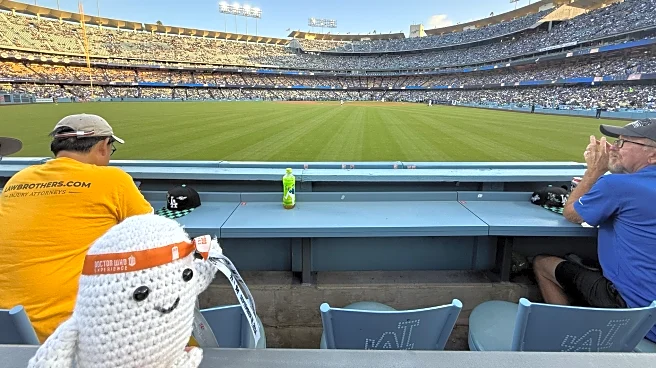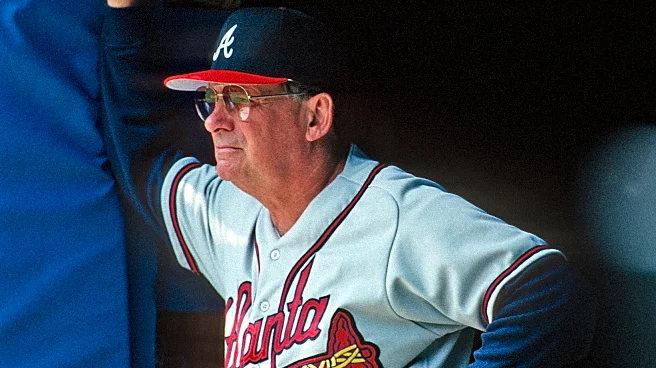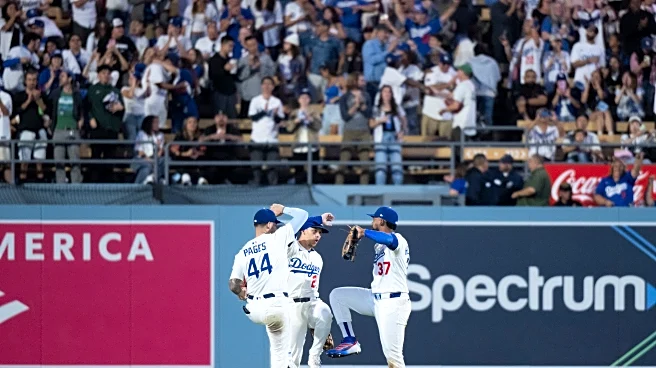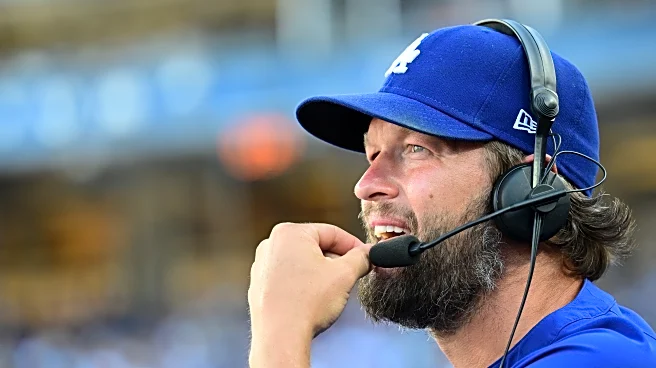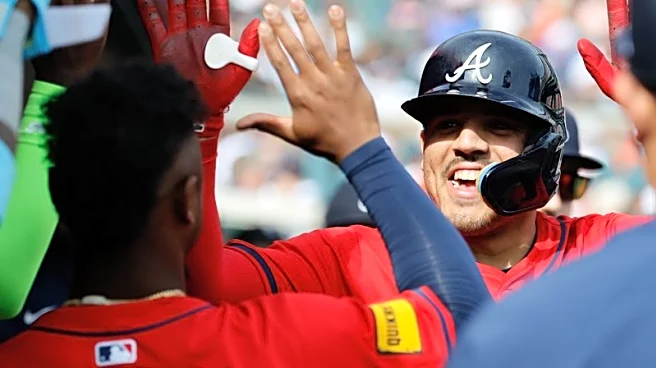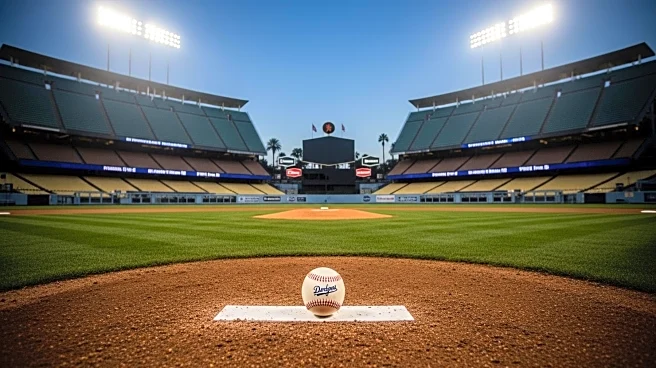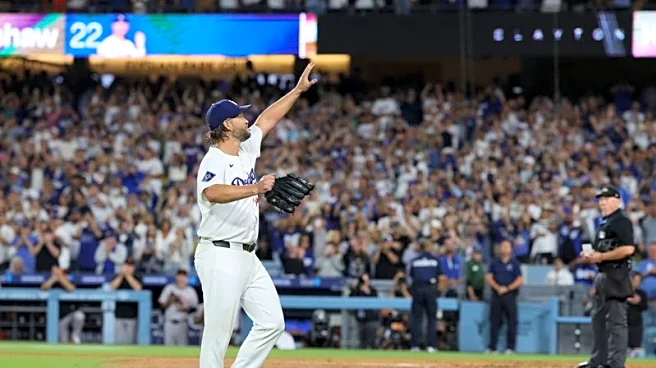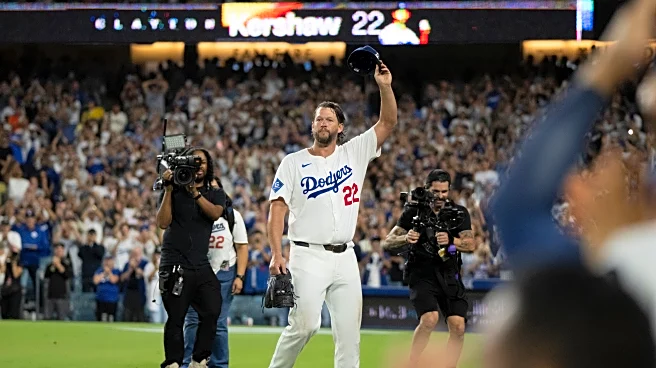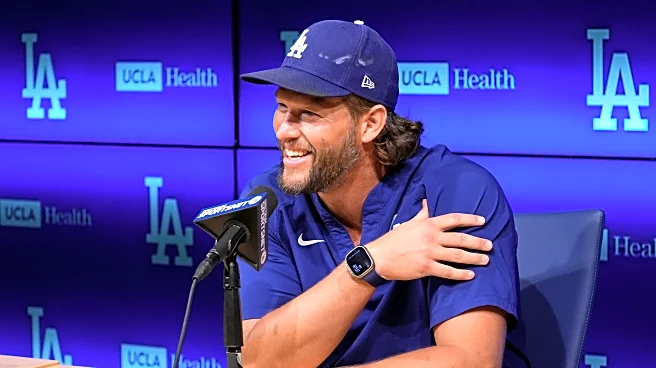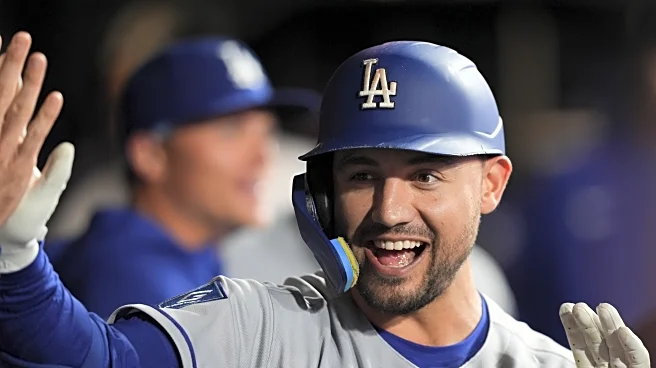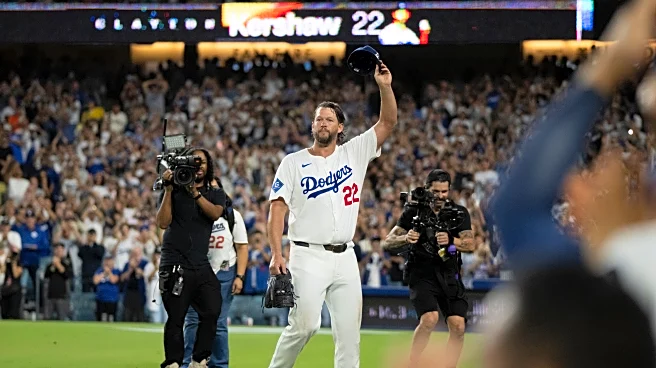Typically, after a road trip for True Blue LA, I write up an essay and we have a field report about the proceedings. But something happened upon my visit to Los Angeles. How do you report on happenings that you, dear reader, experience every home game? What can I tell you that you do not already know?
I tried something different and did a deeper dive on things that I noticed while visiting — things not apparent to a local.
Writing about home games at Dodger Stadium has always felt a bit redundant,
considering that the bulk of the readership either lives near Dodger Stadium or considers Our Blue Heaven their home ballpark. Fair enough, really.
Although the home fan generally has little reason to try to photograph Dodger Stadium from the air of a banking airplane on approach to Los Angeles International Airport. All things considered, I feel I did a fair job, even though I had to suffer while trying to get out of LAX with my sanity intact.

Generally, as a de facto Traveling Correspondent (the use of “the” is not appropriate in 2025, considering that Andy Lane Chapman also makes the trek out to games, including Pittsburgh), it is only noteworthy when I return to Dodger Stadium when something interesting happens — say a Championship Rally where I finally meet my boss.
My mother had not been to Dodger Stadium in almost 40 years. A few days before we arrived, I notified Customer Service where we were sitting, and I asked if they could prepare something as a surprise. After the fifth inning, someone showed up with a gift bag with a replica Jackie Robinson jersey, a Jason Heyward City Connect bobblehead, a couple of other odds and ends, and a certificate that misspelled her name, wishing her a happy birthday.

She had fun, but she is in no hurry to return to Dodger Stadium. Frankly, I do not blame her. This “lost” field report became exceedingly difficult to write. Yes, the Dodgers won two games. Yes, we had fun. We stayed downtown near Union Station, instead of Little Tokyo, which was a mistake.
Hard Times
In prior work, I have warned out-of-towners that Los Angeles is both bigger than expected and cumbersome to traverse. I had previously recommended that out-of-towners stay in Little Tokyo. While not a perfect location, I concluded that the neighborhood offered the best mix of proximity to the ballpark and a relatively safe environment for walking around.
The same cannot be said for the hotels near Union Station.
While the hotel we stayed at was less than a five-minute walk from Union Station, it was less than ideal navigating those clearly hunched over, dealing with fentanyl. It was doubly frustrating when some of those same people tried to break into the hotel.
I should not have to warn people not to visit Olvera Street after sunset. I should not have to warn people against walking from Union Station at night.
Parts of Los Angeles have fallen on hard times. That statement is not very newsworthy. It is heartbreaking to see how bad things have gotten in some places firsthand. Discussing my outing to Dodger Stadium would not be complete if I did not mention this fact.
The waiting is the hardest part
The main issue that prompted a delay in this essay was my experience with the Dodger Stadium Express. I have long been an advocate for this cheaper alternative to ridesharing to and from Dodger Stadium. It had been four years since I visited the stadium for a game, and it was good to see so many people using the service in a wing of Union Station that did not interfere with normal operations.
Before the August 15th game, my mother and I walked to Union Station about two hours before first pitch. It took about thirty minutes from leaving our hotel to stepping off the bus to line up to enter Dodger Stadium. I would estimate that about 1000 people were waiting to take the Express. The experience was how I remembered with LAPD assisting with traffic and guiding the Express with dedicated traffic lanes.

The problem arose on the return trip, both nights. It took over two hours to get back to Union Station. During both nights, there were literal gaps of an hour between buses arriving to collect people at Dodger Stadium. Thousands of people were left standing and waiting for Metro buses to creep along at a snail’s pace without police escort back to Union Station. I even wrenched my shoulder while trying to keep myself from falling over.
I have been on bus rides literally all over the world, and those rides back to Union Station triggered some long-repressed memories about a hellish ten-hour bus ride I took from Siem Reap to Bangkok almost a decade ago.
At the time, I could not help but wonder whether this incompetent display was the Dodgers and Metro intentionally tanking the operation of the Dodger Stadium Express in some misguided effort to build support for the Gondola. Honestly, even with my steadfast opposition to the project, the thought of having aerial cars to glide over all was appealing.
Then my sanity returned.
Dodger Stadium Express can be improved with more LAPD participation and more buses at a fraction of the cost. However, alleviating my inconvenience is not worth the disruption to the surrounding neighborhood. Frankly, the question that should be asked, which no one is openly asking, is “how should the Dodgers responsibly develop the lands, currently held by parking lots?”
At the risk of spoiling future work, a significant labor stoppage is likely coming as the owners seem hellbent on erasing the gains in the sport caused by the new speed-of-play rule changes. The Dodgers finally topped 4 million fans this year, a first in franchise history.
While the team has led MLB in attendance yearly since 2013 (with the obvious exception of 2020), no team has reached 4 million fans paid attendance since the New York Mets and New York Yankees did it in 2008, the final seasons of Shea Stadium and the original Yankee Stadium.
But this self-inflicted blunder is a topic for a later day, as the Dodgers’ current budget dominance will persist, even while the trend of other teams getting into the commercial real estate business continues.
Currently, the only substantive update to the project is that California legislators thwarted an end run by supporters of the project aimed at accelerating the project. That said, Bill Shaikin of the Los Angeles Times correctly pointed out that this project was initially pitched eight years ago with little to no progress. Like a lump that has yet to be biopsied, the project persists without any final action or momentum either way.
One of the main selling points of the Gondola Project — that it would be ready in time for the 2028 Olympics — now feels more like a wish than an actual plan.
Karma Police
As the home schedule ends, I have to admit that it has been tough being a fan in 2025. Frankly, I am not talking about the baseball, which has been maddeningly inconsistent for months now. Watching baseball in Japan was a dream come true, but watching bad baseball stateside was revisiting old trauma. However, my thoughts turn to issues that lingered on the periphery of the field of play that soured my enjoyment of this year’s title defense.
I suppose the bloom wilted early when the Associated Press reported in March that only eleven contracts had been renewed in 2025, down from 12 in 2024. For our purposes, the name that dropped from this list was notable: Andrew Toles, the restricted outfielder felled by mental illness and out of the game since 2018. The Dodgers never made much of a fuss about this humanitarian move — it was simply the noble thing to do for someone with an incurable condition.
No news on this subject has happened since, which is good, but then other non-baseball matters pushed their way onto our collective radar, making focus on baseball almost impossible.
Doing good and causing good seems like a simple rule to live by, and yet so many fall short.
Rather than engage in social commentary, I return to an issue that reared its head during my last visit. While en route on August 15 on the Dodger Stadium Express, we passed the Dodgers Tour Guide Union demonstrating for better wages with their ongoing labor dispute with management regarding their contract, which will be covered in depth at a later date.

Considering the substantial revenue the Dodgers generate, even without the additional income from the Tour Guides, I have long held the position that, despite protests to the contrary, owning an MLB team is a license to print money.
It is somewhat surprising that the Tour Guide’s labor issues persist despite the franchise’s ongoing financial success. Since what the Dodgers bring in is not disclosed to the public, it seems incomprehensible that the Dodgers would risk damaging public relations in a prolonged labor dispute with their own employees. However, here we are.
Once again, we return to the words of Brennan Lee Mulligan, who offers a comparable example with the wages of coffee baristas, whom he argues deserve fair wages, dignity, comfort, and safety.
Accordingly, it should not be a controversial position that those working tours at Dodger Stadium, which I think we can all agree is an unalloyed good, should be allowed to work with dignity, comfort, and safety while doing a job they both love and are passionate about.
To end this essay on a hopeful note, we turn to an event that occurred long after I left Dodger Stadium: the imminent retirement of Clayton Kershaw.
Even with my conflicted feelings about Kershaw’s legacy, Josh Gitt, a traveling Dodger fan I met in Japan, shared a message Shohei Ohtani published in a Japanese newspaper for Kershaw that he saw and posted during his recent return travel to Japan. Even in the most unstable situations, it is essential to remember the power of kindness.
On that note, there is a literal week left in the regular season. I will be providing my final report of the 2025 regular season in Seattle as I attend the Dodgers’ last two games of the year in a bit of poetic symmetry.
